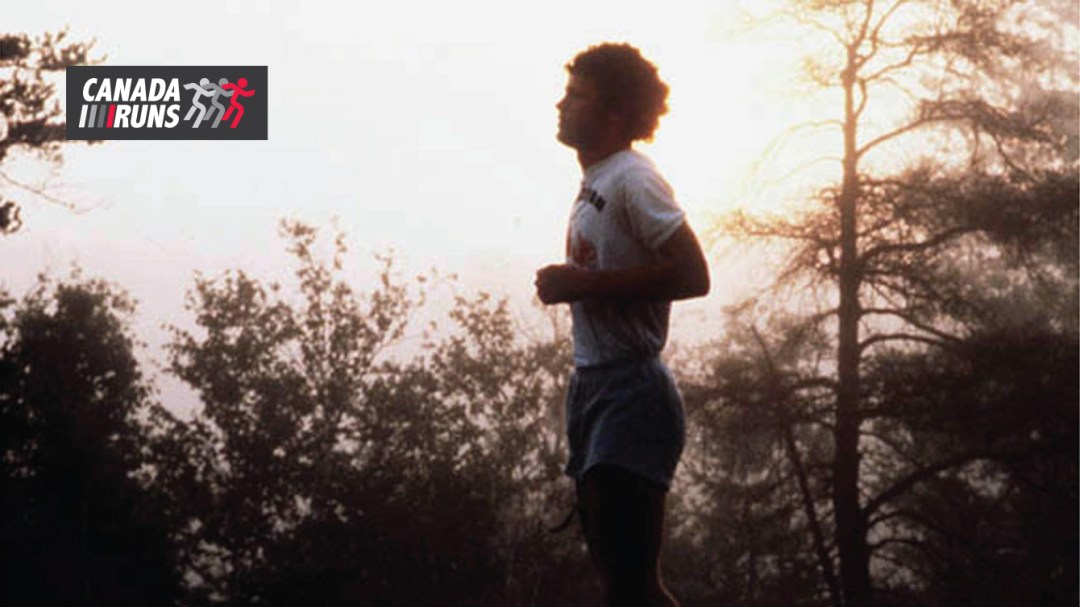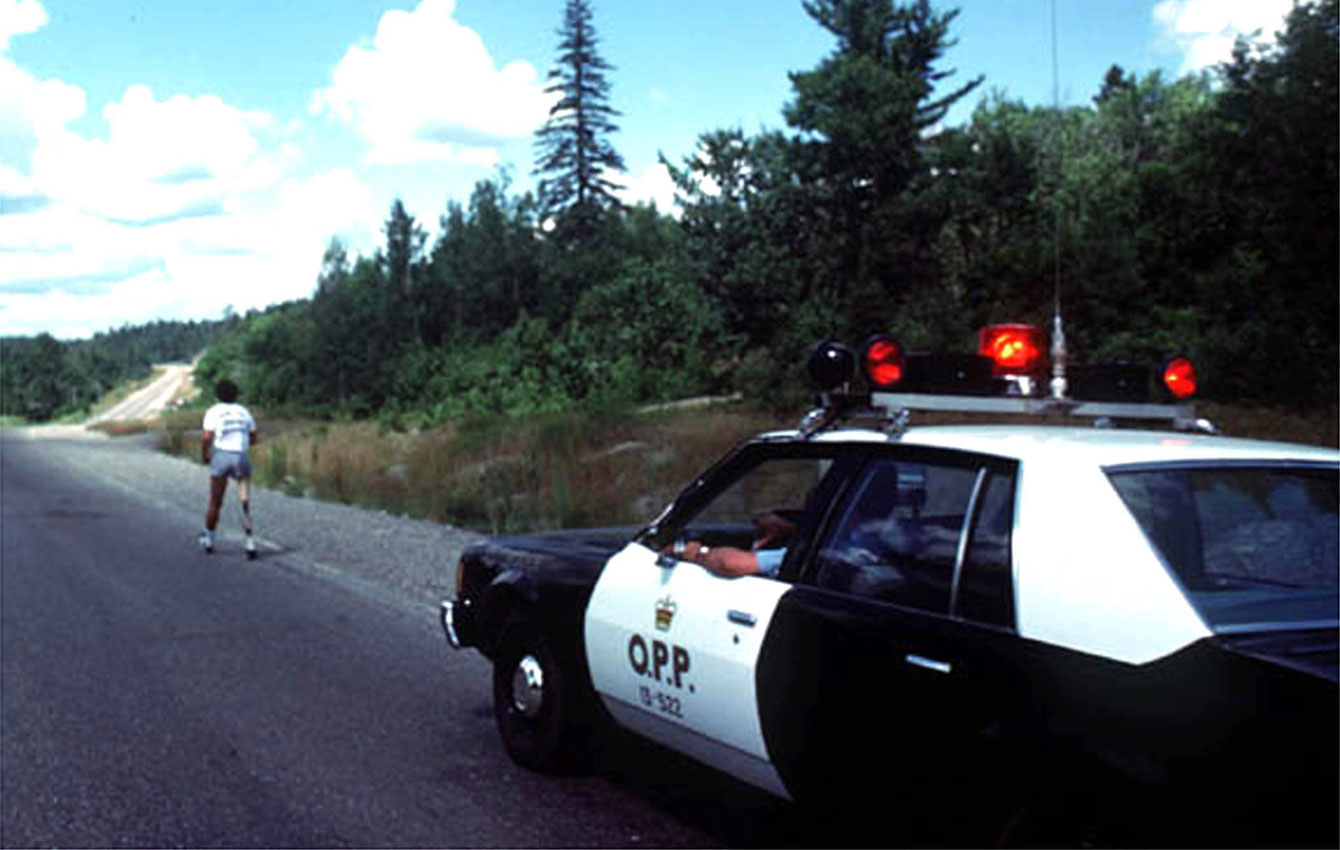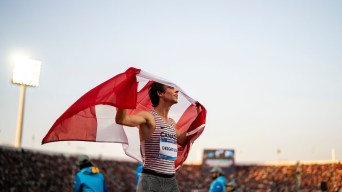Marathon of Hope: The most famous run on Canadian soil
This story is part of an Olympic.ca series on running called Canada Runs.
Looking back on Canada’s running history, one figure still towers over all when it comes to capturing the nation’s heart as well as igniting a sense of unity and selflessness.
Terry Fox wasn’t an Olympian, nor was he running to collect medals or accolades. He simply wanted to raise funds for cancer research. Despite that disease robbing him of his right leg, Fox thought the best way he could reach his fundraising goals would be to run across the world’s second largest country.
Thus began the Marathon of Hope nearly 35 years ago. It is simply the nation’s most famous run and remains to this day an example of bravery and purpose to Canadians. Thanks to one of its greatest citizens, Canada runs every year to keep Fox’s legacy alive.
https://youtu.be/_DEf2TIc5sY
ESPN 30 for 30 – Into The Wind part 1 | 2 | 3 | 4 | 5 | 6
“It was an amazing thing,” Fox’s older brother Fred told Olympic.ca while camping at aptly named Hope, British Columbia last week. “When he passed away in June (1981), Canadians just weren’t going to let this go. They loved Terry, they wanted to continue his dream.”
RELATED: Terry Fox Foundation 35th anniversary
It was an ambitious goal in the best of circumstances. Fox couldn’t finish his run due to cancer spreading to his lungs, ultimately ending his life at 22, but not before he ran nearly a marathon a day over four and a half months. His memory still resonates. Hundreds of thousands of Canadians, and now internationals too, have taken the baton in coordination with the Terry Fox Foundation every year to lace up and run.
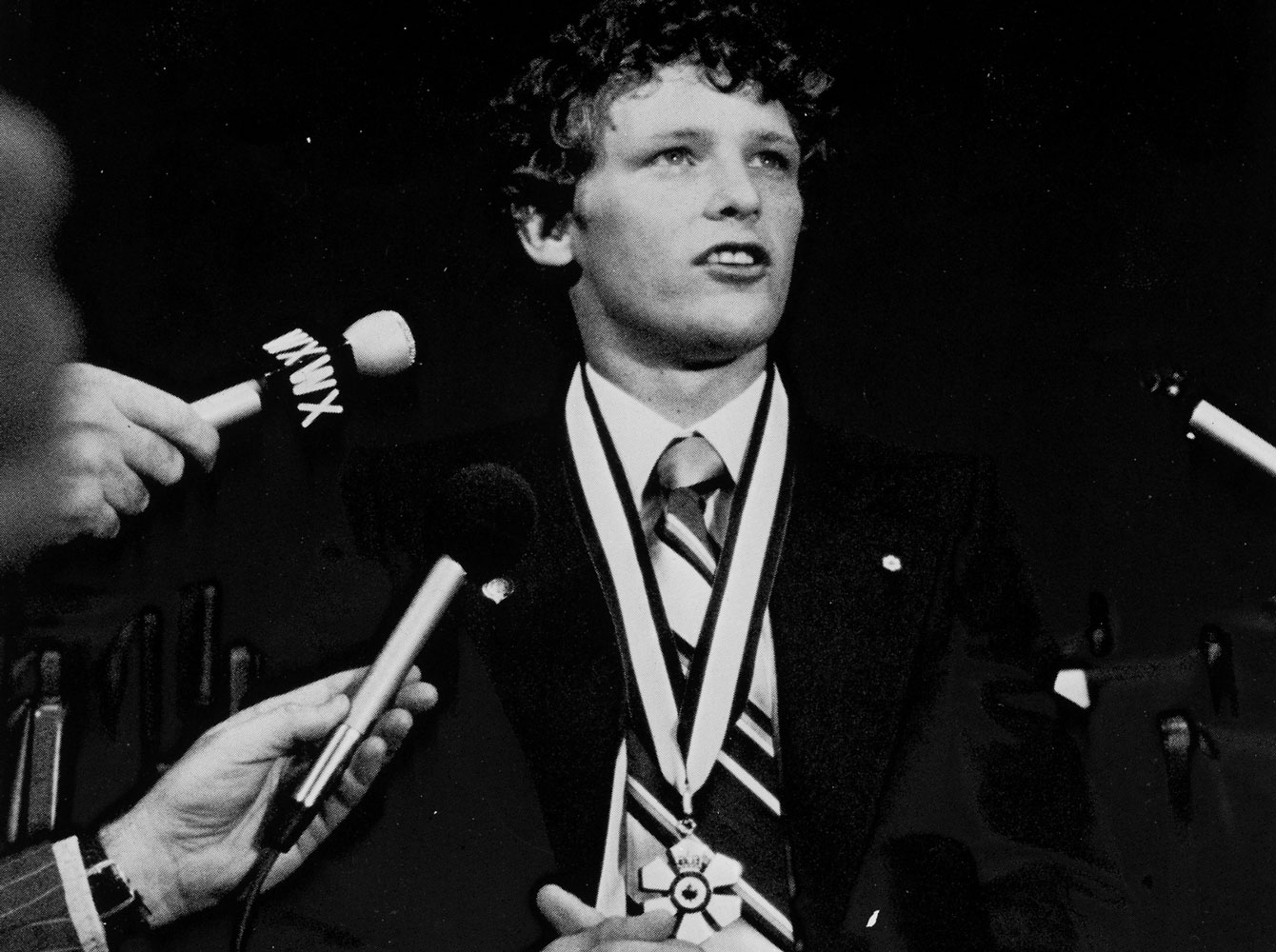
Terry Fox received the Order of Canada in September 1980, shortly after he had to abandon his Marathon of Hope.
The initial idea took the Fox family by surprise.
“There wasn’t a lot of discussion,” Fred Fox said over the phone. “When Terry was doing all this running and training, putting in the mileage – first of all – learning how to run with an artificial leg, and then everyday increasing his mileage, we thought he was training for the Vancouver marathon, which is what he had told everybody.”
Fox became an amputee in 1977 when he was 19. Within two years he was as actively engaged in sports as he had been before the operation. He also befriended Paralympian Rick Hansen – an inspirational figure in his own right – around this time. Fox began to think more deeply about cancer and how he can make a difference in people’s lives that were affected by the illness.
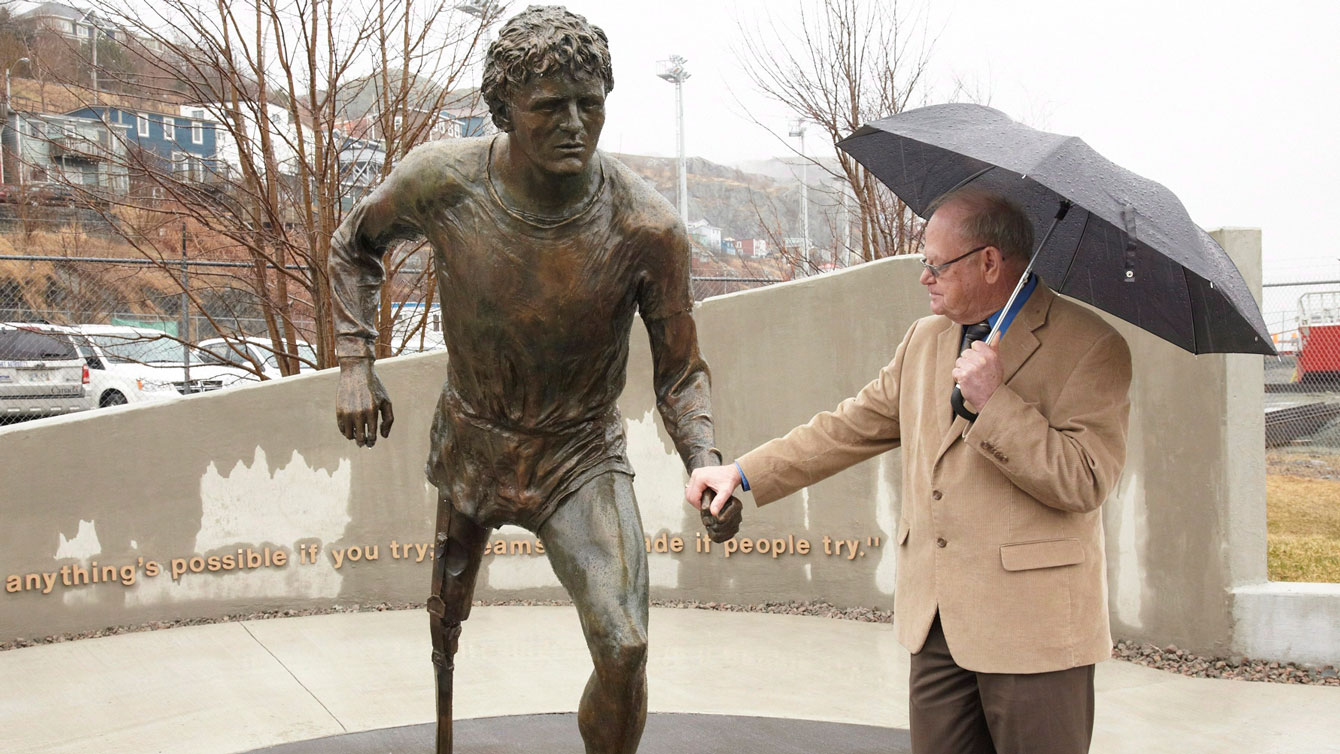
Rolland Fox with the statue of his son Terry at Mile 0 in St. John’s, Newfoundland in 2012. One of Terry Fox’s famous quotes, “I just wish people would realize that anything’s possible if you try; dreams are made if people try” is etched near the statue.
The family, with parents Rolland and Betty, kids Fred, Terry, Darrell and Judith moved from Manitoba to British Columbia in 1966 when the oldest child (Fred) was nine. It was in BC where the idea for the incredible trek took hold.
“Terry, our brother Darrell and (Terry’s friend) Doug Alward, they went up to Prince George along with Rick Hansen and participated in this event up there,” Fox recalled. It was the Prince George Marathon in late summer 1979. The novice marathoner was last, but ecstatic that he was able to finish.
Ask any distance runner and most will point to a particular day, be it in training or a race, that provided assurance that goals are achievable. Prince George provided such a moment for Fox. That’s where the Marathon of Hope found its roots.
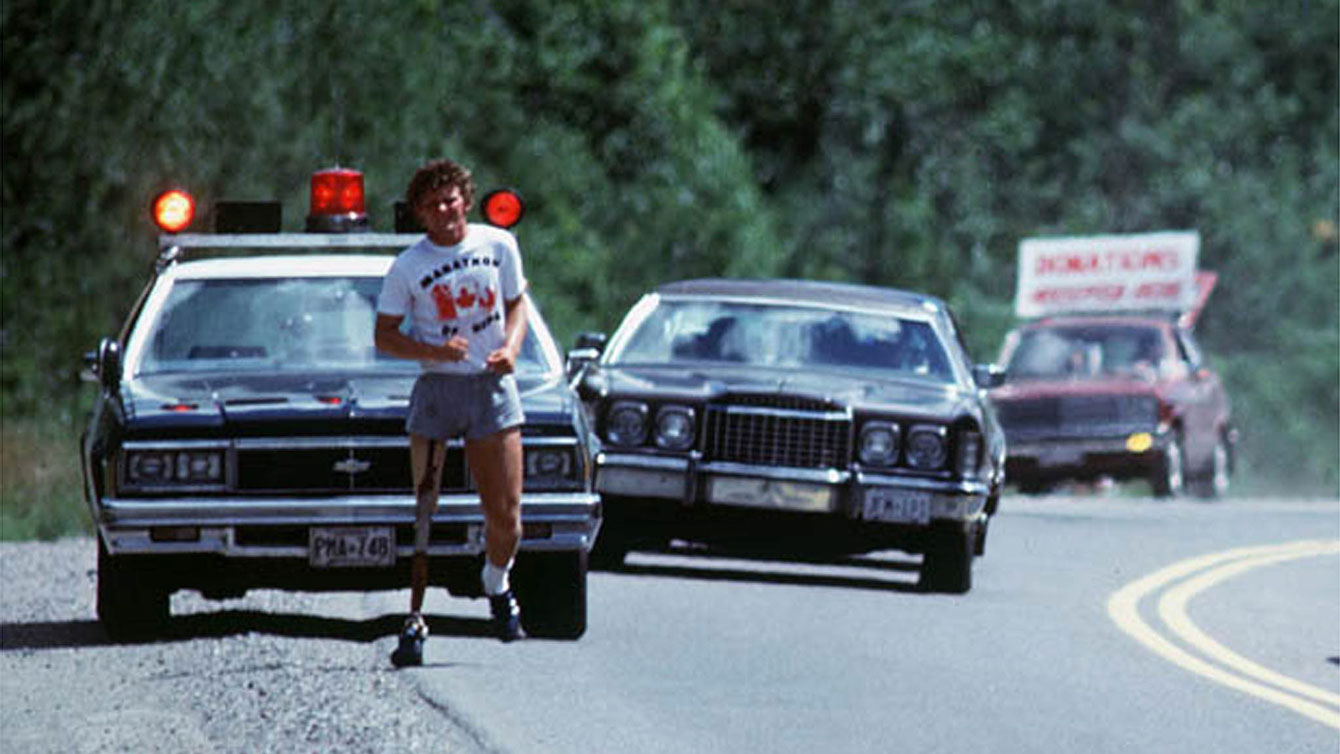
Terry Fox received Ontario Provincial Police escort while he ran through the province. In the photo, the third car in the convoy has a sign that reads “Donations Accepted Here.”
“Terry ran that with all the able-bodied runners and came back home and fessed up to our mom that he wasn’t training for the Vancouver marathon, but in fact, he wanted to run across Canada.”
Today roughly 800 communities throughout Canada take part in Terry Fox Run events, wholly organized by volunteers, without the aid of large corporate marketing campaigns and advertisement. It mimics the humble beginnings of the original Marathon of Hope.
“Once we all knew what he was planning on doing a few months later, we were all on board, and we did all we could – fundraising events and everything else – to make sure he and Doug got to Newfoundland to get started,” Fox said remembering that the family was still quite unsure how the whole thing would work out, let alone become a national story.
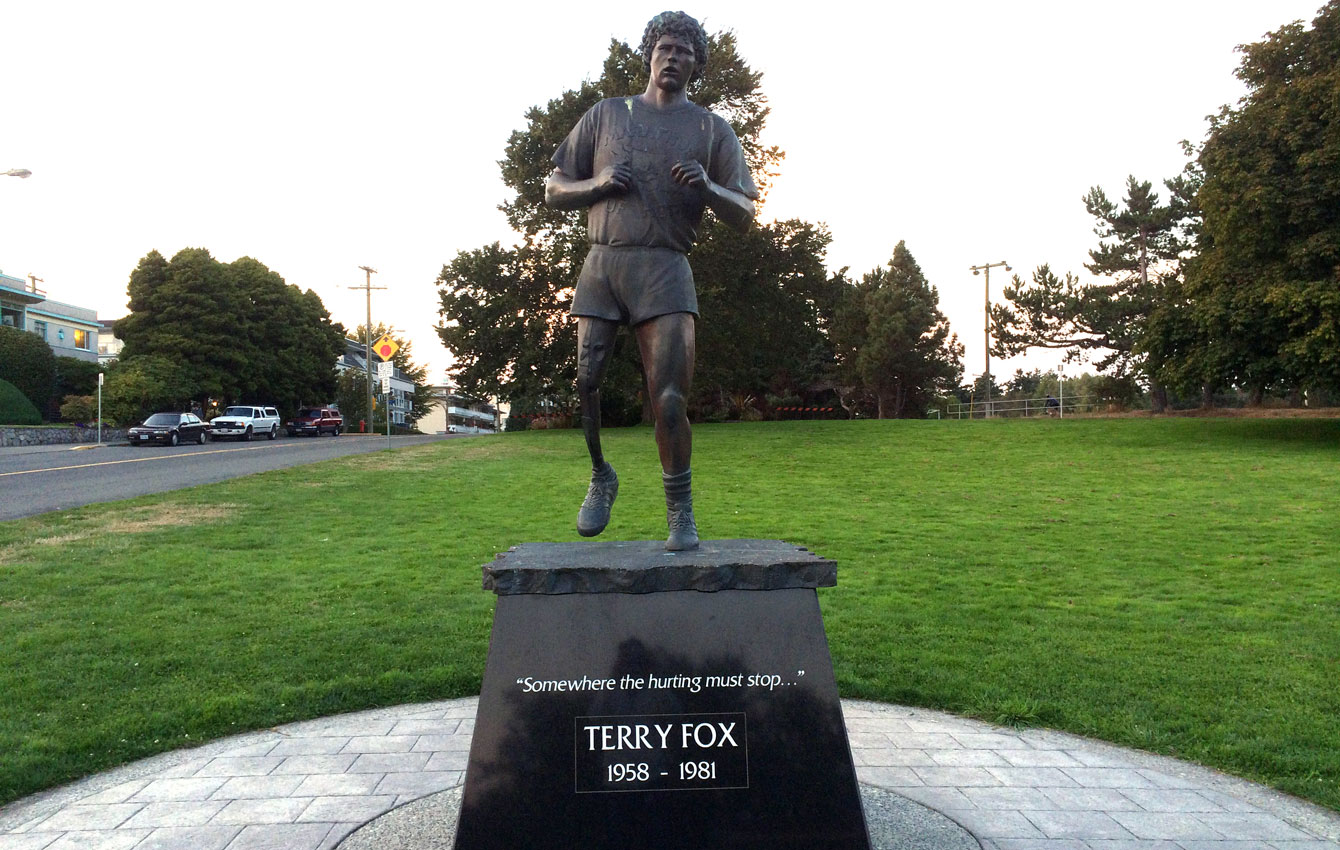
Terry Fox statue in Victoria, BC steps from the Pacific Ocean with the inscription “Somewhere the hurting must stop…” Fox would have ended his Marathon of Hope on the Pacific Ocean after starting from the Atlantic.
It finally did start on April 12, 1980. Fox famously dipped his artificial leg in the Atlantic Ocean off the coast of Newfoundland and began his journey with the goal of reaching the Pacific Ocean on the other side of the gigantic nation.
Older brother Fred laments that being a young man himself back then and trying to start his own life, he couldn’t help his brother as much as he would’ve liked to.
“It’s one of those things I regret, and can never change that.”
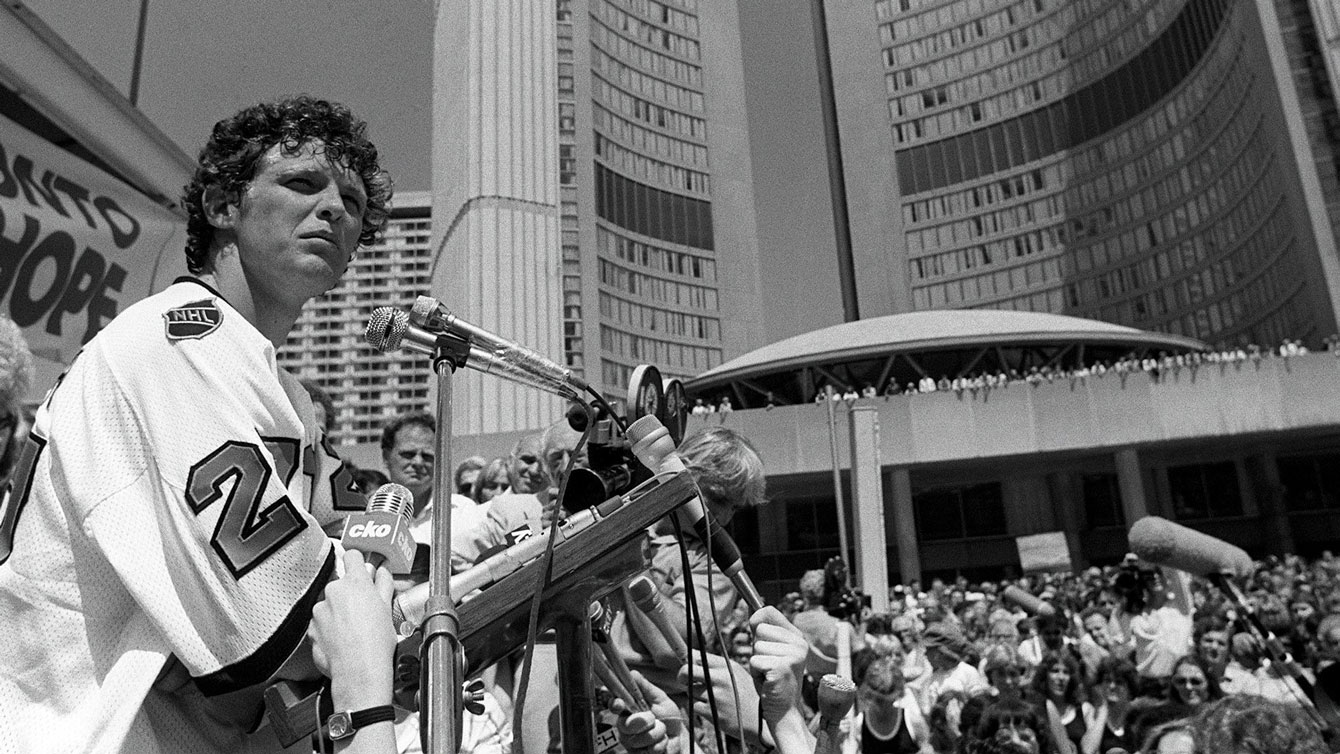
Terry Fox addresses the crowd at Nathan Phillips Square where a reported 10,000 people had gathered to watch him arrive in front of City Hall. Fox is wearing a Darryl Sittler NHL All-Star Game jersey, donated to him by the Toronto Maple Leafs legend who joined Fox on the run up University Avenue.
“He ran 5,000 kilometres in training even before he left Newfoundland, I never saw him run any of it. First time I saw Terry run was watching the six-o-clock news and here was Terry running through the Maritimes somewhere. I finally got to see Terry run in person when he arrived in Toronto.”
By the time Fox hit Toronto, he had become a national hero. The oldest sibling fondly remembers running up University Avenue to Nathan Phillips Square with his brothers, joined by Toronto Maple Leafs legend Darryl Sittler where crowds were lined up to welcome the emerging icon.
When the run went toward Northern Ontario, the brothers were united again in Wawa, running the region’s legendary hills together about 10 days before Fox had to stop on September 1, 1980 as the reoccurrence of cancer had taken its toll. Canada’s most famous runner passed away nine months later, always hoping to recover and resume from where his one-man race had ended.
In 1988, the family separated its fundraising aims from the Canadian Cancer Society, partly out of respect for Fox’s wish that all that was raised in his name would be donated to cancer research.
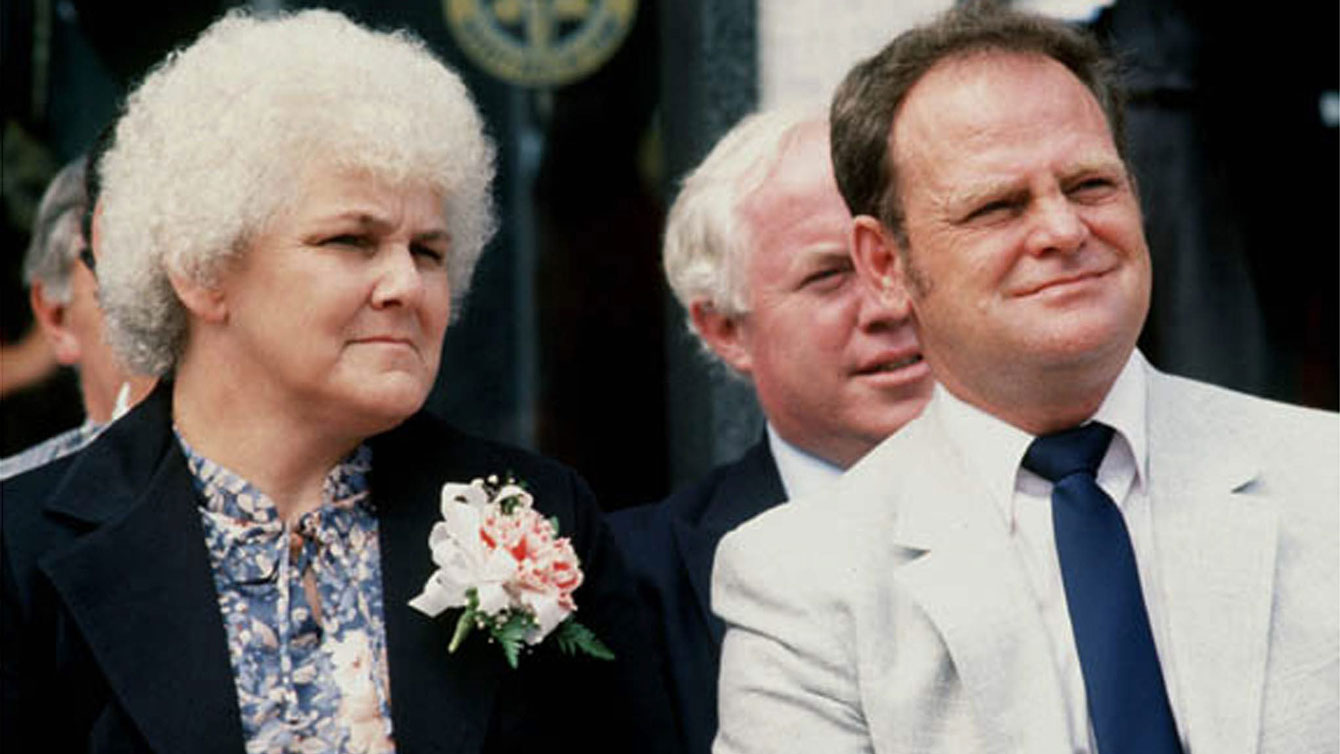
Betty and Rolland Fox at their son Terry’s posthumous Canada’s Sports Hall of Fame induction in 1981. The late Betty Fox became the family spokesperson and a leading figure in the Terry Fox Foundation as it became independent to pursue her son’s wishes.
“Terry, when he was running he didn’t take anything, he didn’t want any of the money that was raised. That’s not why he was doing it. He wanted every cent to go to research. To administer things it’s not quite possible to send every cent, but it’s very important for the Foundation to follow what Terry believed in.”
Today, the Terry Fox Foundation operates as a lean organization with just over 20 staff members covering the entire country. A remarkable 84 cents of every dollar donated goes to cancer research.
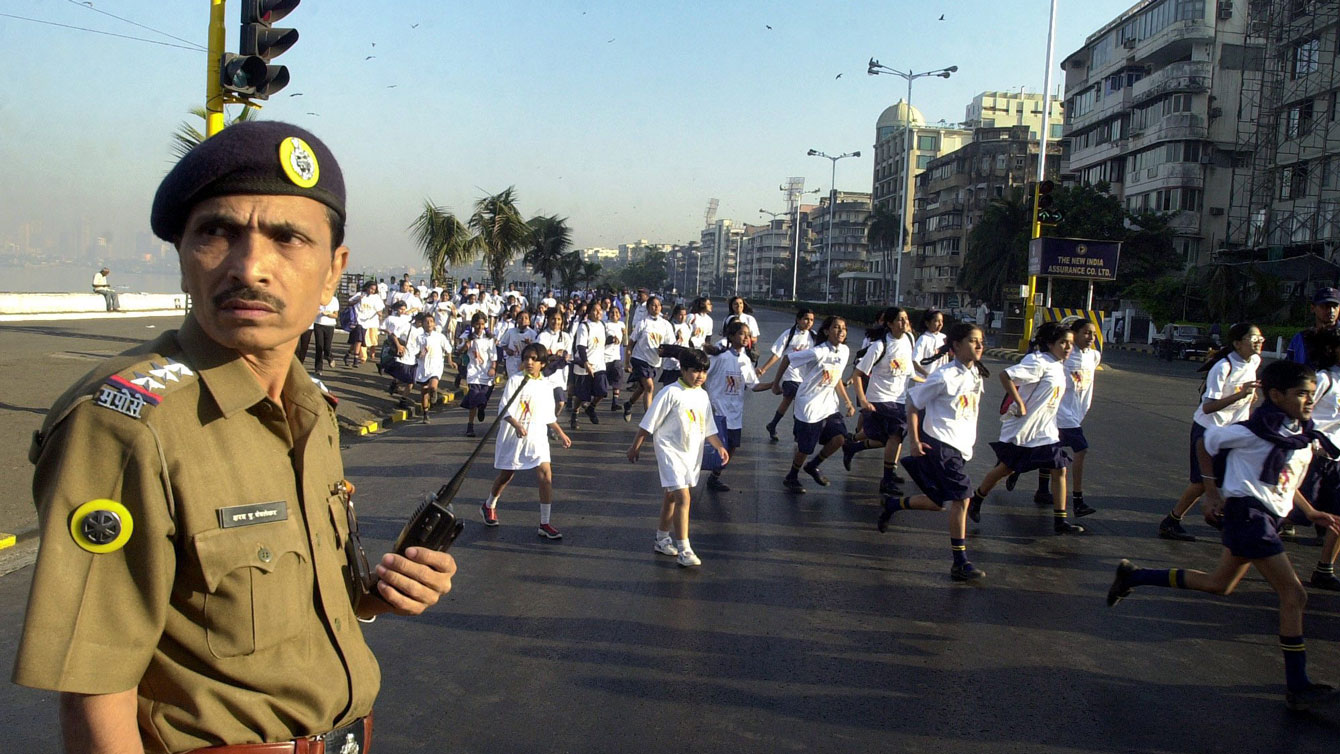
A police officer stands on guard as children take part in an international Terry Fox Run, Bombay, India in 2004.
“We scraped, we are very grassroots. That’s what Terry would want.”
The surviving Fox children now carry their brother’s message to schools and events across the country and even overseas, where Canadian expats and locals have started to organize the Terry Fox Run in places such as Morocco, the United Arab Emirates and Singapore.
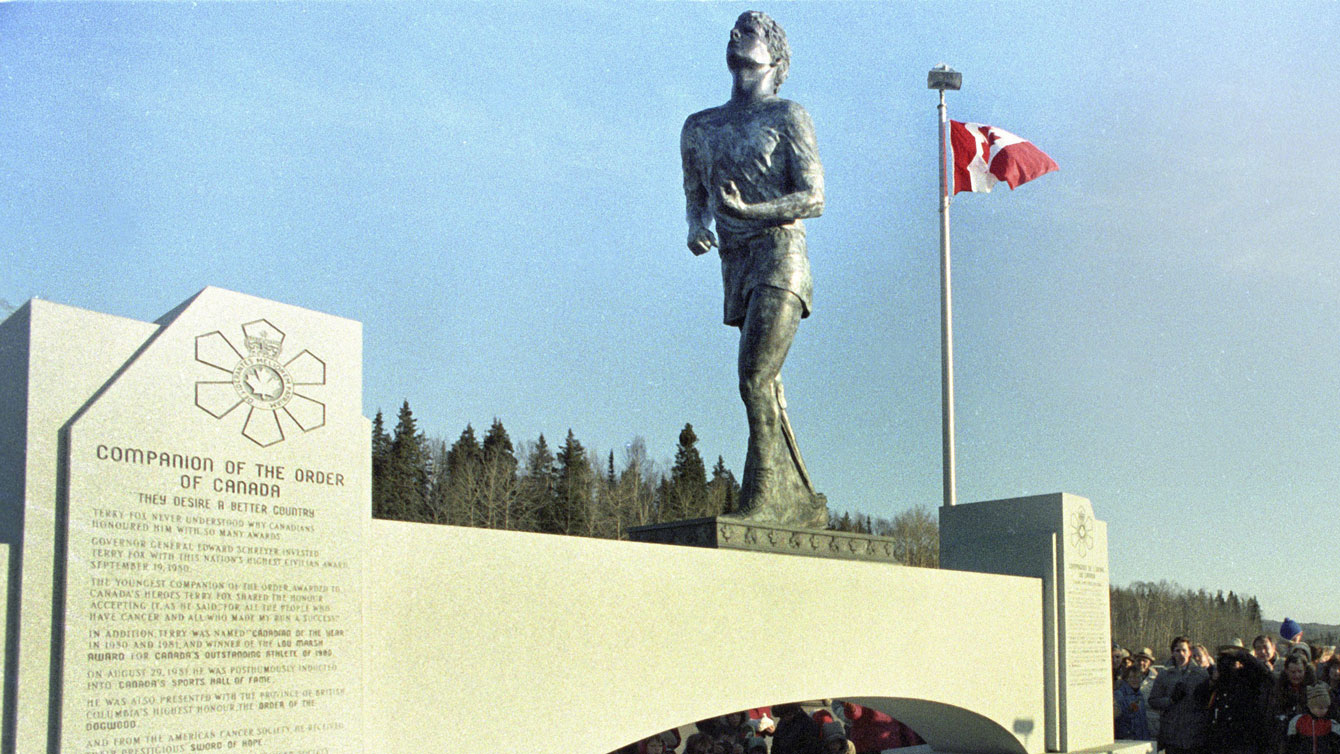
This memorial to Terry Fox stands near Thunder Bay, Ontario, close to where Fox had to stop after covering 5,373 kilometres over 143 days.
Fred Fox remains awestruck that his brother’s legacy has been passed down through generations.
“It’s the most amazing thing that I get the opportunity to be a part of it visiting schools and sharing Terry’s story,” Fox said, often finding children already know all about his brother thanks to parents and grandparents.
“Terry was unfortunately forced to stop, but people have grabbed on to that. Terry said in the Marathon of Hope, ‘it’s not about Terry Fox, it’s about other people who today and in the future will have been touched by cancer.’”
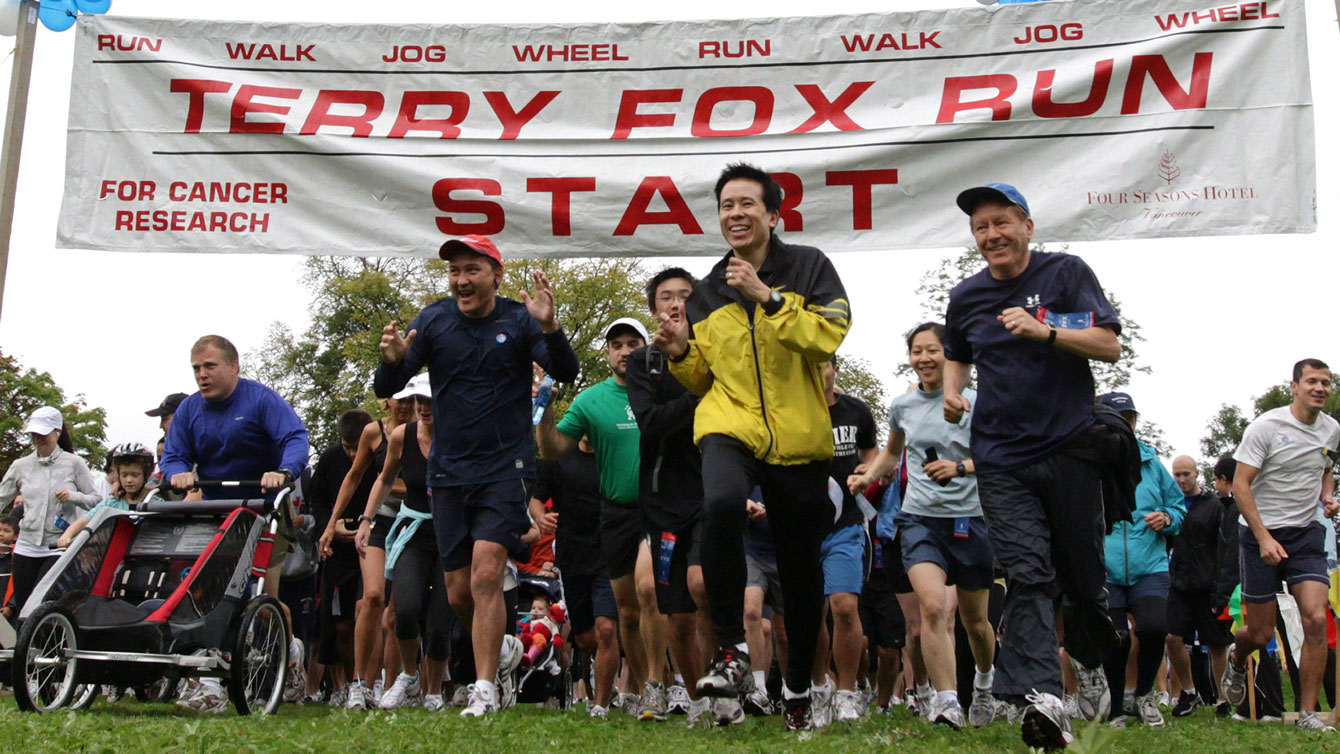
In photo: a 2010 Terry Fox Run in Vancouver. Terry Fox Foundation donated $14.6 million to cancer research in 2014. The organization donates 84 cents of every dollar raised to cancer research for advancements in battling the disease.
This year the family and Foundation members will mark the 35-year anniversary of the first run on April 12 in St. John’s, Newfoundland. The events in September still have no entry fee or donation requirement, yet last year thanks to generous participants the Foundation donated $14.6 million to cancer research. It’s something they’ll continue doing so long as Canadians remain passionately committed to finding a cure for cancer as Fox was.
“It’s Terry’s integrity, his honesty, his dedication to commitment, his selflessness, in being out there everyday running close to a marathon a day to make a difference in other peoples lives. I think that’s why people continue today, they’re just so passionate about Terry’s story and wanting to continue what he started.”

